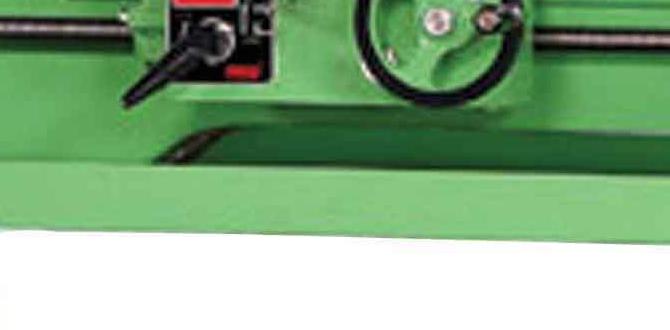Wood Lathe Duplicator: Stunning Furniture Legs
Achieving perfectly matched and intricately detailed furniture legs has long been a hallmark of fine craftsmanship. Traditionally, this required a skilled hand, countless hours, and an unwavering eye for precision. However, the advent of the wood lathe duplicator for furniture legs has revolutionized this process, making it accessible to woodworkers of all levels and enabling the creation of stunning, identical pieces with unprecedented ease. This innovative tool essentially acts as a template follower, allowing you to guide a cutting tool along a master pattern, replicating its exact form onto a new piece of wood.
The magic lies in the ingenious design of the wood lathe duplicator. Typically, it consists of a tracing stylus or guide that follows the contours of a pre-made master. This master can be a physical object, like a model of the leg you want to replicate, or it could be a meticulously drawn outline. As the master is moved, the stylus translates that movement to a cutting head, which precisely carves the same shape into the workpiece mounted on the lathe. This synchronized movement ensures that every turn, every curve, and every detail of the master is faithfully reproduced, guaranteeing seamless symmetry and perfect proportions for your furniture legs.
The Benefits of Using a Wood Lathe Duplicator for Furniture Legs
The advantages of incorporating a wood lathe duplicator for furniture legs into your workshop are manifold. Foremost among these is the elimination of the tedious and often frustrating task of hand-matching multiple identical parts. Imagine crafting four Queen Anne legs for a dining table. Without a duplicator, each leg requires individual turning, constant comparison, and meticulous adjustments to ensure they are as close to identical as humanly possible. This is not only time-consuming but also prone to subtle variations that can detract from the overall aesthetic of the finished piece. With a duplicator, you create one perfect master, and then effortlessly produce as many identical copies as needed.
Beyond uniformity, the duplicator significantly enhances efficiency and productivity. What might have taken days of painstaking work can now be accomplished in a fraction of the time. This allows hobbyists to complete projects more quickly and enables professional woodworkers to take on larger commissions or streamline their production processes, increasing profitability.
Furthermore, the wood lathe duplicator democratizes complex woodworking techniques. Intricate designs that might have previously been limited to highly experienced turners are now within reach for beginners. By following a well-crafted master, even novice woodworkers can produce professional-looking results, boosting their confidence and expanding their repertoire of furniture-making skills. The duplicator essentially removes the barrier of raw skill, allowing creativity to take center stage.
Exploring Different Types of Wood Lathe Duplicators
The market offers a variety of wood lathe duplicator for furniture legs systems, each with its own strengths and ideal applications. One common type is the pantograph-style duplicator. These systems utilize a series of linked arms that move in a precise ratio, typically 1:1, allowing the tracing stylus to precisely follow the master and guide the cutting tool. They are generally robust and capable of handling a wide range of shapes and sizes.
Another popular option is the template-guided duplicator. In this setup, a flat template, often made of plywood or MDF, is created with the desired profile cut out. The tracing stylus rides along the edge of this template, translating its shape to the cutting tool. This method is exceptionally good for creating consistent profiles and is particularly well-suited for furniture legs with repeating geometric patterns or curved elements.
More advanced systems may incorporate electronic controls or even CNC (Computer Numerical Control) capabilities. While these are a significant investment, they offer unparalleled precision and repeatability, allowing for extremely complex designs to be duplicated with absolute accuracy. For those seeking the ultimate in precision and automation for their furniture leg creation, these high-tech solutions are worth considering.
Tips for Achieving Stunning Results with Your Wood Lathe Duplicator
To truly unlock the potential of your wood lathe duplicator for furniture legs, a few key practices can elevate your results from good to stunning. Firstly, invest time in creating a high-quality master. This is the blueprint for your entire project, so ensure it is perfectly shaped, smooth, and free of any imperfections. For template-guided systems, accurate cutting of the template is paramount.
Secondly, select the right cutting tools for your duplicator and the material you are working with. Sharp, well-maintained tools are essential for clean cuts and a smooth finish. Experiment with different gouges and scrapers to find what works best for the specific profiles you are creating.
Thirdly, proper setup of the duplicator on your lathe is crucial. Ensure it is securely mounted and that the tracing stylus and cutting tool are aligned correctly with the workpiece. Take the time to calibrate the system for optimal accuracy.
Finally, don’t be afraid to experiment. While the duplicator excels at replication, you can still infuse your own artistic touch. Consider variations in wood species, finishes, and decorative elements that can be added before or after duplication. The duplicator provides the perfect foundation for your creativity to build upon.
In conclusion, the wood lathe duplicator for furniture legs is an invaluable tool for anyone seeking to create beautifully matched and detailed chair legs, table legs, or any other turned components for furniture. It offers a powerful combination of precision, efficiency, and accessibility, empowering woodworkers to achieve professional-grade results with greater ease than ever before. By understanding its benefits, exploring the different types available, and employing best practices, you can harness the power of this technology to craft truly stunning furniture legs that will be the envy of all who see them.




